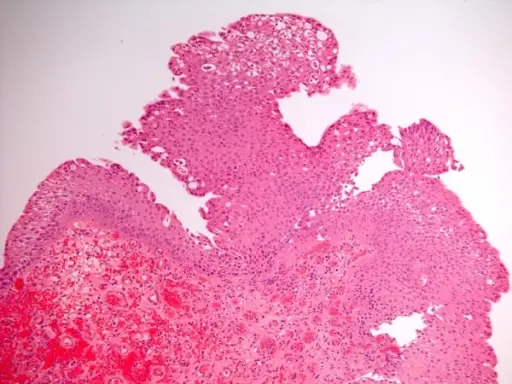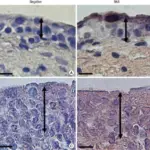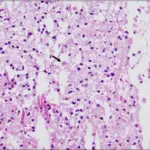Polypoid cystitis is a reversible inflammatory exophytic lesion of the bladder mucosa.
What is the Pathology of Polypoid Cystitis?
The pathology of polypoid cystitis is:
-Etiology: The cause of polypoid cystitis is an injury to the bladder mucosa.
-Genes involved: TP53.
-Pathogenesis: The sequence of events that lead to polypoid cystitis is from injury caused by urinary catheters. Polypoid cystitis can also be caused by other conditions that injure or irritate the inner lining of the bladder such as kidney stones, and radiation therapy.
-Morphology: The morphology associated with polypoid cystitis shows friable, broad-based, often edematous bullous, polypoid or papillary lesions.
-Histology: The histology associated with polypoid cystitis shows thin, finger-like papillae or broad-based polypoid lesions with congestion and edema of lamina propria.
How does Polypoid Cystitis Present?
Patients with polypoid cystitis typically affect males 49 years of age. The symptoms, features, and clinical findings associated with polypoid cystitis include painful urination and hematuria, pain with burning urination, and pressure in the bladder along with urinary incontinence.
How is Polypoid Cystitis Diagnosed?
Polypoid cystitis is diagnosed by ultrasound or CT scan to better visualize the bladder.
How is Polypoid Cystitis Treated?
Polypoid cystitis is treated by a combination of endoscopic resection, ureteral stenting, and in resistant cases oral steroids which can be considered to aid the resolution of inflammation in the absence of infection.
What is the Prognosis of Polypoid Cystitis?
The prognosis of polypoid cystitis is generally good with appropriate treatment.



